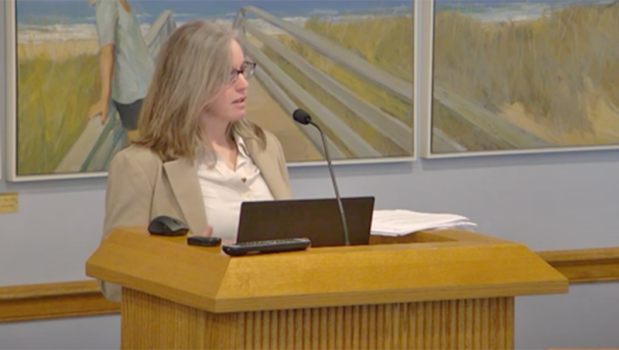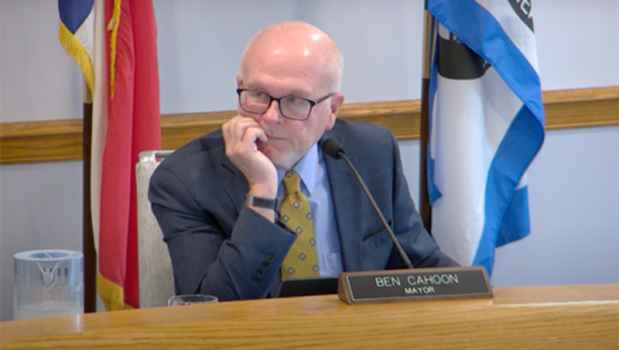Nags Head tables multi-family dwelling amendments for now, creates task force
Published 11:48 am Wednesday, February 21, 2024
|
Getting your Trinity Audio player ready...
|
At their February 7 meeting, Nags Head commissioners heard the planning department’s proposals to establish multi-family dwellings in town, though they ultimately decided the table the issue and opt to create a task force to represent a wide range of interests.
Planning director Kelly Wyatt presented eight months of work on the part of the planning board for consideration by commissioners.
Though the following amendments were not approved by commissioners, they will likely be a starting point for the task force, and therefore worth explaining for public awareness.
In January 2023 commissioners removed “multi-family” as an allowed use within the General Commercial (C-2) district. The intent was to evaluate town goals and purposefully add multi-family back in where it was deemed appropriate. Wyatt said the proposed amendments to the town code would sort out issues and inconsistencies with prior verbiage and offer new definitions.
“It was consensus that we wanted any new multifamily units to be for the local workforce and not to be affiliated with salary or income,” Wyatt said.
She added that commissioners and the planning board agree that these changes are designed to create housing opportunities for the workforce and residents, and specifically not to add more vacation rentals. To accomplish this, the town would utilize deed restrictions.
In its simplest form, a deed restriction is just a limitation on how a piece of real estate can be used, and what types of structures can be built on it. Deed restrictions have been discussed on the Outer Banks that would include requirements that a property – or a certain number of units if multi-family – must be used for the workforce or for long-term rentals.
Wyatt said the planning board recommended different density standards – or how many units would be allowed according to lot size. Three units were proposed for the first 26,000 square feet of lot area, plus an additional unit for every 3,500 square feet of lot area.
For example, on a one-acre lot (which has 43,560 square feet), three units would be allowed for the first 26,000 square feet, plus another five units (the remaining 17,560 divided by 3,500), for a total of eight units.
Wyatt said when she and her team ran the data to see how many potential units could be added in town, they were surprised. As a result of the higher-than-expected number, they discussed allowing additional units for every 4,500 or 5,500 square feet instead of 3,500.
The planning board recommended two different development standards: large multi-family development (capped at 60 units) and small multi-family development (capped at six units). The smaller developments would have less stringent requirements (for things like setbacks, lot coverage, height, buffering, architectural design, etc.) to incentive smaller pockets of development.
For large multi-family developments, the planning board recommended only townhouse-style development, which means that units would share only vertical walls; whereas for smaller developments, both townhouse and apartment-style would be allowed.
Wyatt also recommended that at least 60% of large multifamily developments be deed restricted for long term occupancy, which she defined as at least 90-day occupancy to allow for seasonal workers like lifeguards.
Unit size was set for a minimum of 800 square feet, and a maximum of 1750 square feet.
Mayor Ben Cahoon asked why the townhouse style construction was recommended. Wyatt replied that the recommendation was primarily aesthetic and not based on cost of construction.
During the public hearing, several people spoke both in favor and against the proposed amendments. An attorney for the Outer Banks Hotel Group opposed the changes due to “a lack of stated notice and a lack of full disclosure” of the proposed ordinances to the public.
Duke Geraghty of the Outer Banks Home Builders Association referenced the housing task force formed by Dare County and asked commissioners to wait and see what recommendations come out of that group.
He called the proposed amendments “confusing” and said he would have liked to go over this ordinance with his legislative committee and with developers who have built multi-family. “I hope that we will postpone the vote on this today until the discussion can take place … and what the Outer Banks Home Builders feels are important issues that could be addressed,” Geraghty said.
Nags Head resident Basil Belches said he approved of the amendments as written.
Commissioner Bob Sanders expressed approval for the amendments, but commissioner Kevin Brinkley said he’d heard from someone in the building community that “this will not work and I have personally – not speaking for the others – I have no interest in adopting an ordinance that’s going to be so restricted and so cumbersome that they’re not going to build units.”
In contrast, commissioner Megan Lambert said “I like what I see in front of me because I feel that it answers those [community housing] needs and doesn’t allow ways that this could turn into short-term rentals.”
Mayor Cahoon was the most vocal of the group, noting both good and bad elements of the ordinance, but stated that he feels the board doesn’t have enough information. “We’re operating in too much of a vacuum” in terms of what the town wants to happen with housing and workforce and “what will actually happen when we enact an ordinance and whether we can get some housing built,” he said.
In other words, there are reservations about whether the requirements will actually be financially feasible for builders.
“I think there’s work to be done,” Cahoon said of the proposed amendments. “I think we we’ve moved a long way. We’ve moved the ball a long way but I think there’s information that we just don’t have about whether the ordinance can actually be put to work.”
The board agreed to appoint a small task force made up of one or two commissioners, planning staff, people from the building community, and citizen stakeholders and neighbors to work on requirements for multi-family that would suit all invested parties.
The board agreed unanimously to appoint the group at the March meeting, and to table the proposed amendments for now.
SUBSCRIBE TO THE COASTLAND TIMES TODAY!






